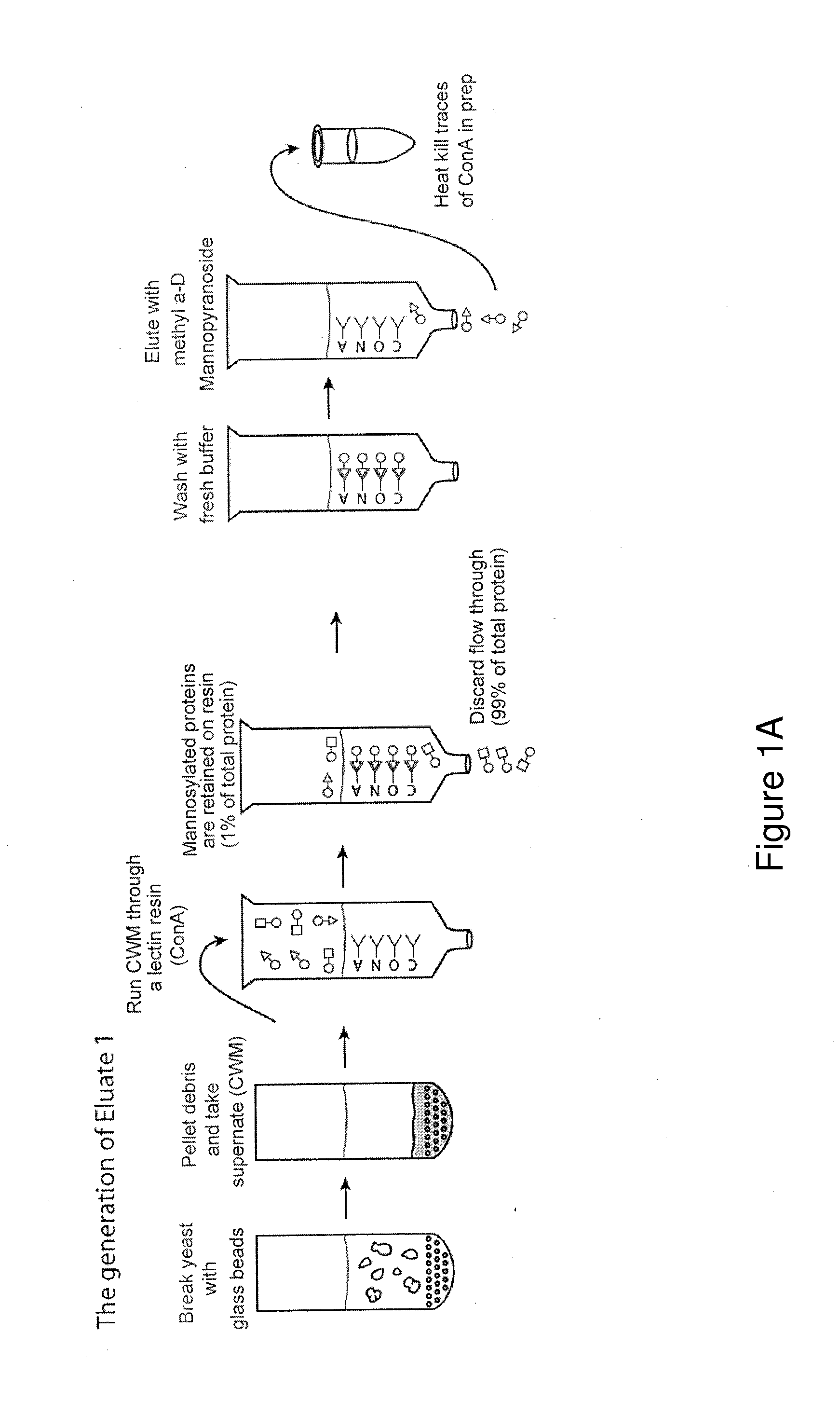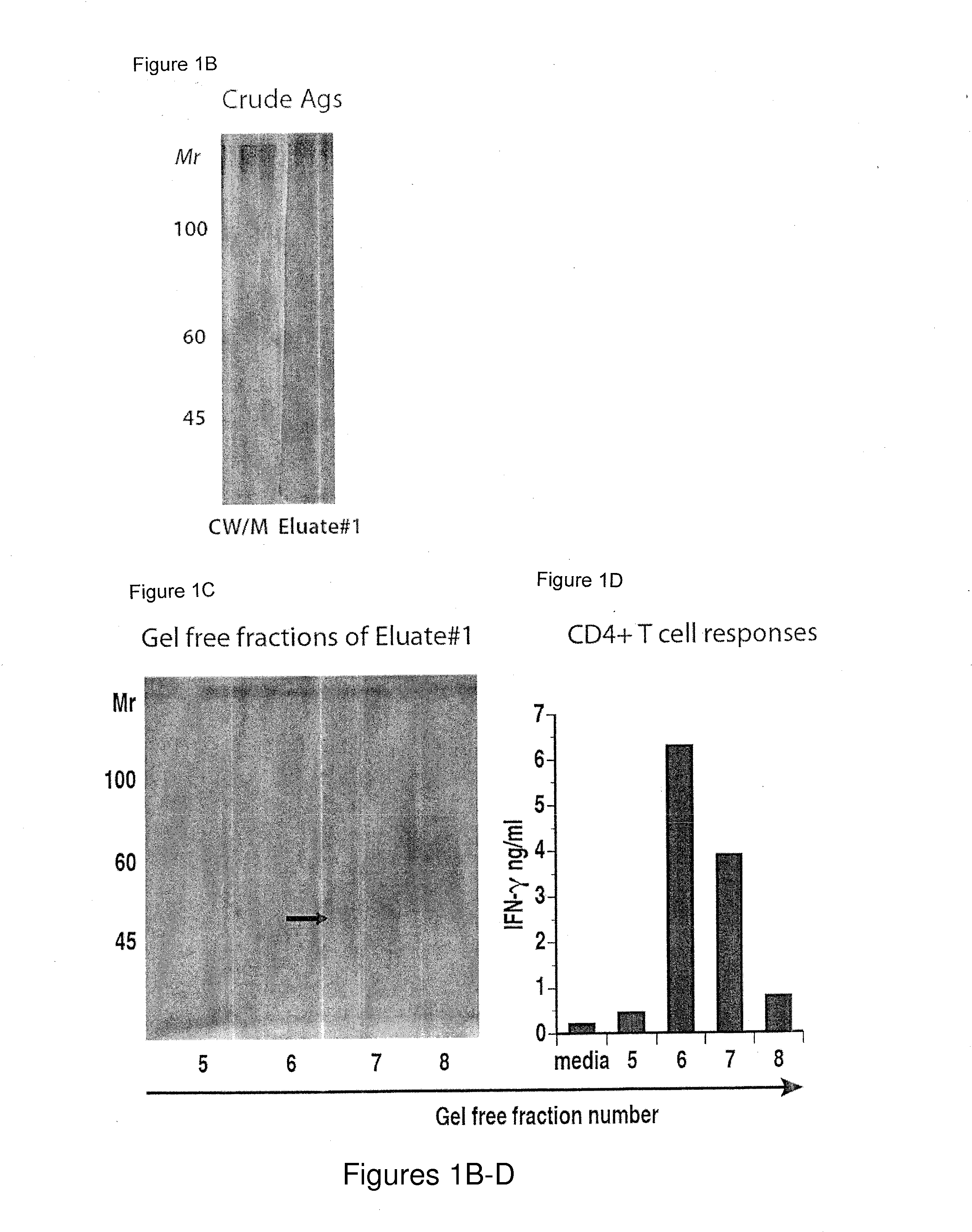Peptide MHCII Tetramers to Detect Endogenous Calnexin Specific CD4 T Cells
a technology of calnexin and tetramers, which is applied in the field of peptide mhcii tetramers to detect endogenous calnexin specific cd4 t cells, can solve the problems of morbidity and mortality, increased medical burden, and increased human population aging and disability
- Summary
- Abstract
- Description
- Claims
- Application Information
AI Technical Summary
Benefits of technology
Problems solved by technology
Method used
Image
Examples
examples
Materials and Methods
[0211]Fungi.
[0212]Strains used were ATCC 26199 (Harvey, Schmid, et al., 1978), a wild-type strain of Blastomyces dermatitidis, and the isogenic, attenuated mutant lacking BAD1, designated strain #55 (Brandhorst, Wuthrich, et al., 1999), as well as Histoplasma capsulatum strain G217B, Coccidiodes posadasii (isolate C735) and Candida albicans strain #5314 (Wuthrich, Hung, et al., 2011); P. destructans ATCC 20631-21; A. fumigatus Af293; and F. pedrosoi strain ATCC 46428. B. dermatitidis was grown as yeast on Middlebrook 7H10 agar with oleic acid-albumin complex (Sigma) at 39° C. H. capsulatum was grown as yeast at 37° C. and 5% CO2 on brain-heart infusion agar (BHI) slants. C. albicans was grown on YPD plates. The saprobic phase of C. posadasii (isolate C735) was grown on GYE medium (1% glucose, 0.5% yeast extract, 1.5% agar) at 30° C. for 3 to 4 weeks to generate a confluent layer of arthroconidia (spores) on the agar surface. Formalin killed spherules (FKS) of C....
PUM
 Login to View More
Login to View More Abstract
Description
Claims
Application Information
 Login to View More
Login to View More - R&D
- Intellectual Property
- Life Sciences
- Materials
- Tech Scout
- Unparalleled Data Quality
- Higher Quality Content
- 60% Fewer Hallucinations
Browse by: Latest US Patents, China's latest patents, Technical Efficacy Thesaurus, Application Domain, Technology Topic, Popular Technical Reports.
© 2025 PatSnap. All rights reserved.Legal|Privacy policy|Modern Slavery Act Transparency Statement|Sitemap|About US| Contact US: help@patsnap.com



